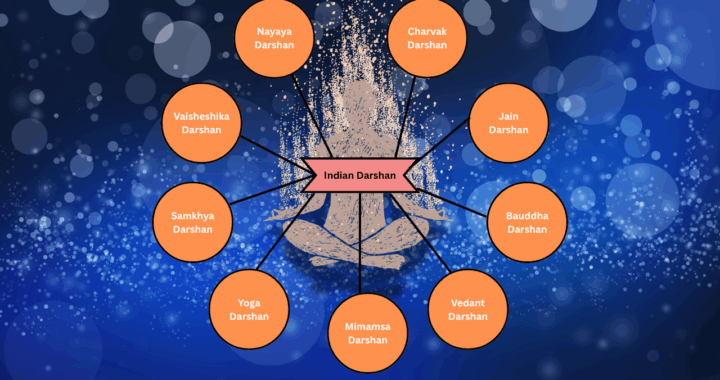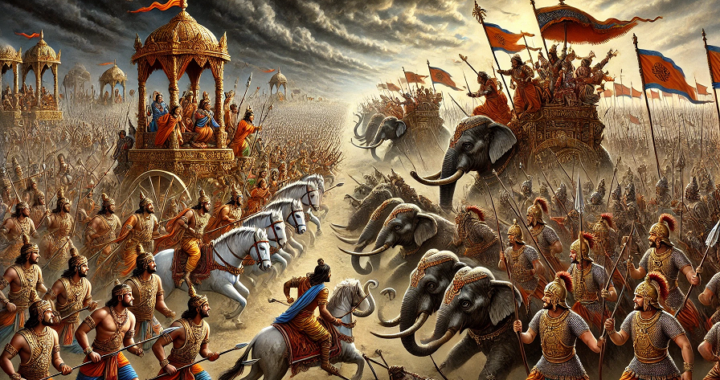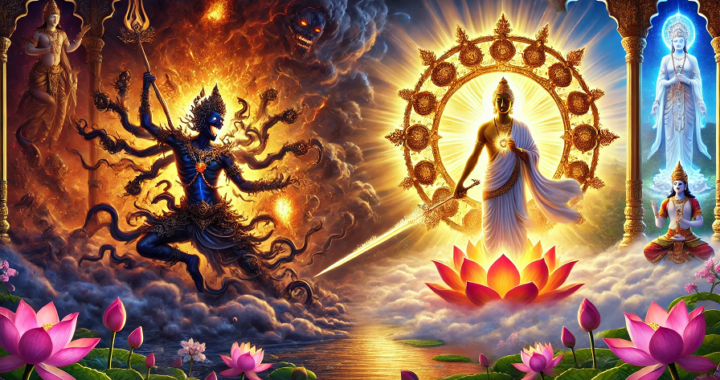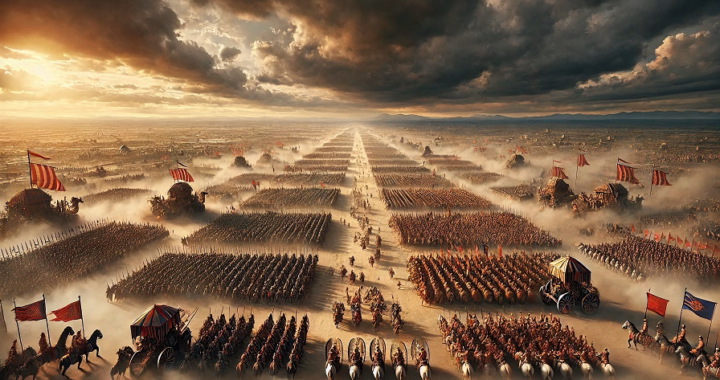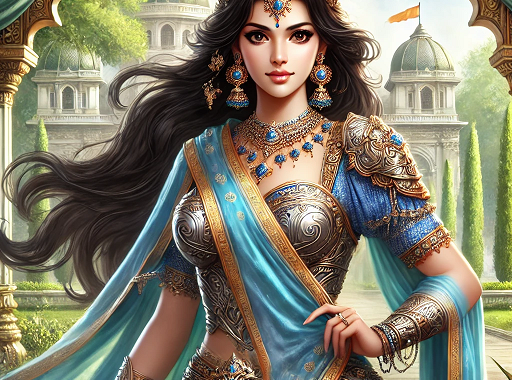The heart of ancient wisdom and Indian Philosophy : Darshana
Indian has very old and long history of knowledge and wisdom. We always tried to look outside for new things but we never ignored the inner world. Exploring the inner side is the foundation of the Indian Philosophy Darshana. Our sages did intense Sadhana to uncover the reality and get the answer of all the […]
Continue reading→The Battle Begins: The First Day of the Mahabharat War
The Mahabharat war started on the Margashirsha Shukla Ekadashi. With the first ray of the Sun, the Kaurava and Pandava armies were ready to write history. Duryodhana, the leader of the Kauravas army made Bhishma Pitamah the commander-in-chief Whereas Yudhishtir made Dritdhyumna-brother of Draupadi the commander-in-chief.
Continue reading→Jaya to Mahabharat : Different names of the great Saga
When Vyasa first wrote the Mahabharata with the help of Ganesha, his entire focus was on the Yuddha (war) and the teachings of the Bhagavad Gita. He named it Jaya, meaning “Universal Victory,”
Continue reading→Stories Of The Remarkable Heroes Who Didn’t Participate In Mahabharat War
The Mahabharata War was the largest in ancient India. It involved almost all the kingdoms from the present-day region of India and kingdoms from Afghanistan, Iran, Tajikistan, Turkmenistan, Iraq, Kyrgyzstan, Tibet, Nepal, Bangladesh, Myanmar, and Sri Lanka.
The estimated total number of warriors who participated in the war was around 4.8 million. Despite such massive participation, there were exceptions. Many important warriors chose not to fight or join in the war. Here are their stories
Continue reading→Chitrangada – A Beautiful Warrior Princess
During Arjuna’s 12-year exile, he traveled across the Indian subcontinent. In the course of his wanderings, he came to Manipur and was stunned by the beauty and bravery of Chitangada. He approached Chitravahana to ask for her hand in marriage. The king agreed upon a condition that any child born from their marriage would be heir to the throne of the Manipur not as the child of Pandava.
Continue reading→
